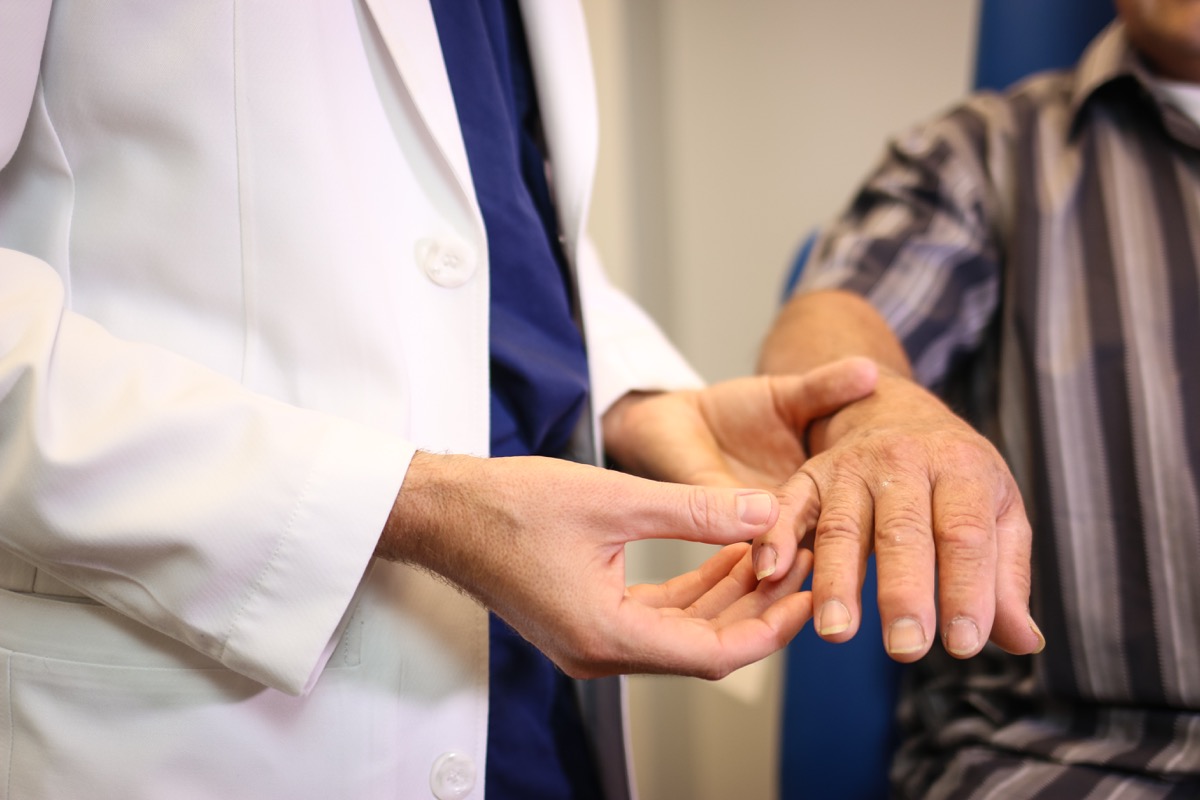RELATED: 40 Heart Risk Factors You Need to Pay Attention to After 40. A study published on May 18 in the American Journal of Cardiology has found that a simple test using the thumb and palm of your hand can often accurately predict whether or not you’re at risk of a major heart issue known as a hidden aortic aneurysm. According to a statement from Yale University announcing the study, the easy “thumb-palm” test involves holding up one hand and keeping the palm flat while the you flex your thumb as far across your palm as possible. If your thumb crosses over the far edge of your palm and sticks out, you’re potentially at a higher risk of a hidden aneurysm.ae0fcc31ae342fd3a1346ebb1f342fcb The study is the first to test the accuracy of the “thumb-palm” test, which doctors have used for decades but has never been assessed in a clinical setting. Researchers administered the quick check to 305 patients set to undergo heart surgery for various disorders, including aortic aneurysms, to gauge its effectiveness. Even though 59 patients had been diagnosed with ascending aneurysms, the thumb-palm test detected that 10 patients had the disorder, while 295 did not. Though the test did miss 49 subjects’ aortic aneurysms, “patients who do have a positive test have a high likelihood of harboring an aneurysm,” senior author John A. Elefteriades, MD, William W.L. Glenn professor of surgery at Yale and emeritus director of the aortic institute at Yale New Haven Hospital, said in a statement. RELATED: If You See This on Your Skin, Your Heart Attack Risk Is Higher, Study Says. The researchers emphasized that not everyone who tests positive with the thumb test is necessarily at risk of an aneurysm imminently. They point out that the condition can take decades to develop to the point of a potentially fatal rupture. According to Yale’s statement accompanying the study, the test simply shows that “being able to move the thumb in that way is an indication that a patient’s long bones are excessive and their joints are lax—possible signs of connective tissue disease throughout the body, including the aorta.” And for more health news sent right to your inbox, sign up for our daily newsletter. Aortic aneurysms remain a serious concern, ranking as the 13th most common cause of death in the United States with more than 10,000 people of all ages killed each year, according to the Centers for Disease Control and Prevention (CDC). But researchers say that detecting the condition early could help keep patients safe with regular monitoring, reduced exercise, or corrective surgery. “The biggest problem in aneurysm disease is recognizing affected individuals within the general population before the aneurysm ruptures,” Elefteriades said. “Spreading knowledge of this test may well identify silent aneurysm carriers and save lives.” RELATED: If You Can’t Do This Many Push-Ups, Your Heart Is at Risk, Study Says.



